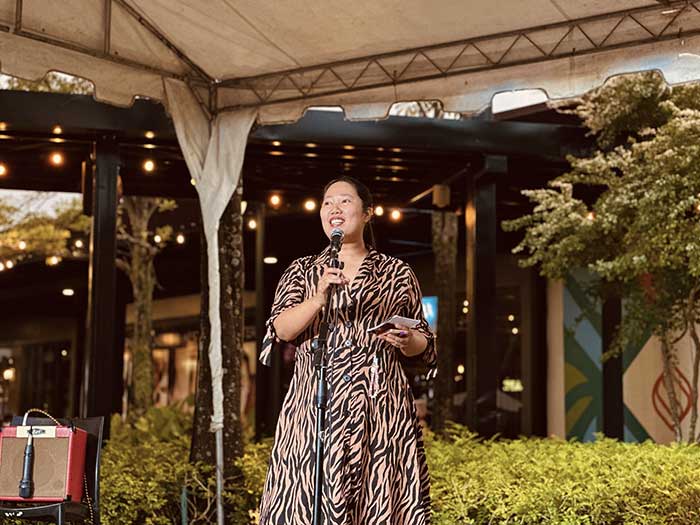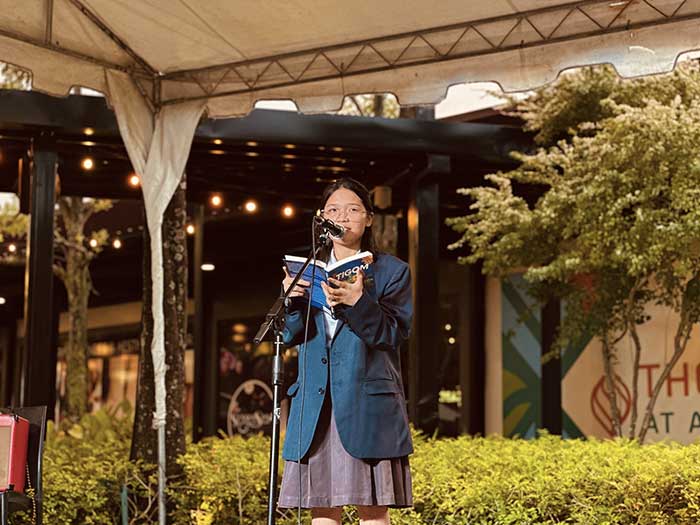By John Anthony S. Estolloso
(UPDATED) I FIRST wrote for Thrive Art Projects last year when I reviewed Christom ‘Dodoy’ Setubal’s exhibit of Iloilo’s local churches in miniature. Allyn Canja, website manager-turned-curator, invited me to write something about visual art or art criticism – and much preferably, something about film, a rather overlooked art form when it comes to local reviews and criticism. I obliged her with a ‘Holy Week’ article about Setubal’s ‘Iglesia’, which was on display at the local branch of the National Museum.
Now, the website has transcended from the digital to the real world: where it once ‘talked’ about art (which it still does), it has now developed as a house of art as well.
While Thrive Art started out as an online platform for art writing where exhibits, art spaces, the contemporary canon, and its criticism are freely discussed, it has emerged as more than just a platform for conversation. Last month saw the opening of a gallery at the Atria Park District, which now accommodates a considerable number of representative works by local Ilonggo artists.
Curated by art critic Allyn Canja and artist Kristoffer Brasileño, the new gallery goes beyond the conventional image of an aesthetic showroom limited to the viewing of artwork: one can readily initiate coffee conversations with visiting artists or procure locally produced stickers showcasing heritage sites or Ilonggo pop culture references. On one nook is a shelf full of books about art that you can buy or, if your wallet will not permit it, read one at leisure.
The celebration of National Arts Month further opened new avenues for making art. Last week saw the revival of Poetika at the Atria grounds, adjacent to the gallery. Truly yours, together with fledgling poets and musicians from nearby Ateneo de Iloilo and some featured local authors – counting among them Early Sol Gadong, Hermz Gacho, and Jag Muyco – read poetry to incandescent lighting and the soft strumming of a guitar. The atmosphere was most bohemian, to say the least – as it should be.
Segueing the literary evening was a series of workshops on papier-mâché art, on-the-spot sketching, and drawing komiks. More than the display of art is its execution and pedagogy: the gallery becomes a meeting place of artist and apprentice, and thus, it ensures the continuity of the aesthetic narrative that would set the identity of Ilonggo art, now and in the subsequent years.
*****
Outside the gallery, passersby are greeted by an eclectic selection of visual art – and the challenge to this critic is to find some common thread running through the myriad tapestries of color and geometry.
One encounters the figurations of existential queries in the surreal canvases of Carlo Juntado or in the astronauts of Dea Bañas, freely floating in a fluid state of flux. The vignettes of Seho Pascual, Brando Banga, Ric Isiderio, Angelie de la Torre Johanz Mercurio, and Yanni Panaguiton, among others, give us a glimpse of humanity seen through the imagination’s rose-colored glasses. Portraits by Job Hablo, Kristoffer Sobremente, August Defensor, Angel Marie Palma, Maia Amo, and Alex Ordoyo invite inquiries about human identity – even if some of these might be feline in form.
Elevating imagery beyond canvas and paint would be the assemblages of Kirby Majaque, deceptive to the eye yet alluring to the beholder. Matching this vitality of free expression are the abstractions of Roland Llarena, Jeline Laporga, Margaux Blas, Mohana Majik, Vincent Bulahan, Alec Wiggin, Frank Alexi Nobleza, and Norman Vincent Acedera, to name a few.
With the aesthetic mélange shared by spoken poetry, art workshops, and the arts exhibit, the viewer is overwhelmed, nay, bombarded with a surfeit of ideas reimagined through diverse forms. To thread and to tread through these becomes an exercise on the cohesion of graphic and spoken narrative: the thriving of art is between the lines that spark discourse and debate.
Far be it for us to predict what the city’s art scene will look like in the forthcoming years, we can somehow assured that there will be passionate artists whose artforms will capture the times and a discerning audience to appreciate and applaud their works. Rest assured, we shall continue to thrive with art.
(The author is the subject area coordinator for Social Studies in one of the private schools of the city. Photos are from Berthille Fillarca and from the Facebook page of Thrive Art Projects; these are used with permission.)






















